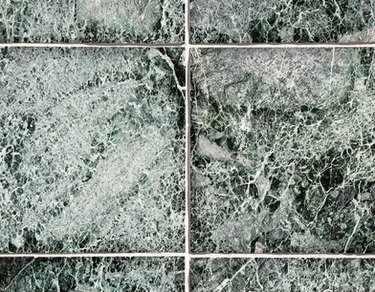
Try not to think of your 3M Scotch Brite pads as mere plastic conveniences. These pads are a derivation of those once used in the aerospace industry to clean and polish vital components and have much more in common with sandpaper than a sponge. Scotch Brite pads actually contain the same material that sandpaper does, so certain grades will indeed scratch anything that the same grade of sandpaper will.
Scotch Brite Construction
Video of the Day
Scotch Brite pads contain one of three common abrasives: aluminum oxide, silicon carbide and flint. Sandpaper manufacturers bond these gritty substances to paper by spraying the paper with a high-strength glue and then spraying it with or dunking it into a vat of abrasive. Scotch Brite pads utilize the same abrasive grit, but the grit is bonded to the individual plastic fibers before they're woven together.
Video of the Day
Alternatives
Scotch Brite pads are one alternative to a few more traditional abrasive substances. Sandpaper is the obvious alternative, but steel wool is actually closer in terms of comparison to Scotch Brite than sandpaper is. Both steel wool and Scotch Brite offer a bit of cushion between the user's hand and the work surface, making for a more comfortable experience and a more consistent surface finish. While steel wool will stand up to more vigorous scrubbing without losing its abrasiveness, it will also leave tiny pieces of metal embedded in the surface as it wears out.
Color Coding and Applications
3M uses a color-coding system to denote its pads' abrasiveness. The tan pad (No. 7440) is the heaviest duty and is equivalent to about 80- to 100-grit sandpaper. Gray pads (No. 7446) use a silicon carbide abrasive and are equal to a 120- to 150-grit sandpaper or a No. 1 or No. 2 grade steel wool. The more common maroon pads (No. 7447) are equivalent to a 360 to 400 grit, and really aren't suitable for use on any kind of cookware. The green pads found in most kitchens and workshops work out to about 600 grit, and their aluminum oxide abrasive is certainly capable of scratching tile under a heavy hand or repeated usage. However, a white No. 7445 pad (1,200 to 1,500 grit) can restore the tile's original luster; just keep the white pad lubricated with soapy water and be prepared to spend some time using it to polish the tile back to a high shine.
Non-Scratch Pads
If you feel uncomfortable using a traditional Scotch Brite on your fine cookware or tile countertops, 3M offers a softer nonscratch scrubby (No. 622) that's guaranteed not to damage softer materials but purportedly remains aggressive enough to remove stuck-on food. If you're after something a little tougher, look into the No. 2020 purple pad that 3M designed specifically for the food service industry. The company claims its purple pad is safe for porcelain, vitrified china and countertops, so it should be suitable for use on tile.